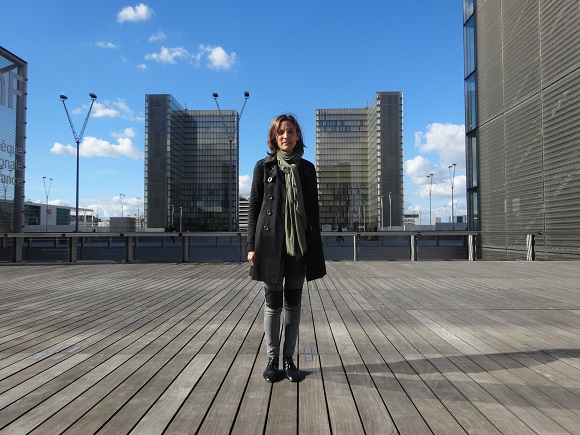
An encounter with Christine Hoarau-Beauval, cofounder of ArchiTrip, a Paris-based company offerings tours of 20th and 21st century architecture and urban planning that help travelers and residents understanding the evolution of Paris beyond the 19th-century upheavals of Baron Haussmann.
* * *
The wealth and stature of Paris have for centuries made it a breeding ground for ambitious projects and the desire of kings, emperors, presidents and recently mayors to make their mark while enhancing and expanding their city.
Though urban planners of the first half of the 19th century were already drawing up plans to break through the dense, epidemic-prone city so as to give it light and air and flowing traffic, it was the vast urban upheaval orchestrated by Napoleon III and Baron Haussmann that came to define Paris, with its wide animated boulevards and avenues, its public parks and gardens and its absorption of the surrounding villages of Belleville, Grenelle, Bercy, Montmartre and others.
Haussmann’s urban planning of 1853 to 1870 and its follow-up over the next 50 years very much defined Paris until well into the 20th century. But as the century progressed, inadequate lodging, health concerns and the automobile became problems to be dealt with in a post-Haussmannian city.
“To say that we’re in Haussmann’s city is an absurdity,” says Christine Hoarau-Beauval, cofounder of ArchiTrip, a Paris-based company offerings tours of 20th and 21st century architecture and urban planning. “It’s untrue to say that we’re frozen in a uniform city that hasn’t since evolved and can’t continue to evolve.”
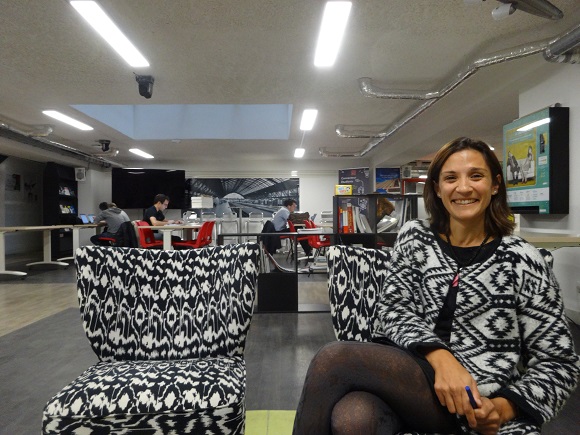
Founded by Hoarau-Beauval, a historian, and Delphine Aboulker-Soriano, a licensed architect, ArchiTrip is filling the void in the tourscape of Paris by revealing the intent and the reality of that evolution. Created in June 2014, ArchiTrip is still a toddler. Its office has been housed since June 2015 in Paris’s nursery for start-ups in the field of urban tourism, Welcome City Lab (76bis rue de Rennes, 75006 Paris). Notably, ArchiTrip is the rare company among the 15 or so of the current class of start-ups to not be tech-oriented.
I have asked Hoarau-Beauval to meet me in Paris’s 13th arrondissement so that I could to learn in situ about ArchiTrip and its tours. In particular, I’ve asked her to show me a portion of the south-eastern edge of the city, a 130-hectare project underway since 1991 called Paris Rive Gauche.
It’s clear as we stand on the windswept plateau of the Bibilothèque François Mitterrand (1996), the library complex that anchors the quarter, that this Paris Rive Gauche doesn’t fit into preconceived notions of Rive Gauche à la Saint Germain Quarter or perhaps even of Paris altogether. Many visitors and residents may even shun it as distinctly “unParisian.”
Hoarau-Beauval tells me that three-quarters of the 13th arrondissement has been transformed over the past 50 years. This zone, formerly defined by industry, docks and rail yards between the Gare d’Austerlitz and the peripheral ring of the city, is still a fledgling district quarter that won’t be completed for another 10 years.

I tell Hoarau-Beauval that I find little to applaud in the architecture of the Mitterand Library (BNF) and the void of its plateau. She has her own horror stories to tell of being a student doing research inside and doesn’t try to disabuse me of my impression. She puts down the library’s original architectural and technical mistakes to a failure to include experts on the use of a building when the building was designed. She then presents the context, the intent, the experimentation, the creation and the evolution of this new quarter along the Seine.
Only recently, she says, has Paris Rive Gauche begun to reach its maturity as residences, businesses and Université Paris Diderot (Paris 7, with its 26,000 students and 2000 faculty)—in short, daily life—have settled into this edge of the city. The quarter is still a work in progress. The wide Avenue de France that runs through the zone, which currently appears to fall off a cliff to the east, will eventually aim towards two towers, the Tours Duo, respectively 180 meters (39 stories) and 122 meters (27 stories) high, as the edges of Paris rise and the region pursues its march towards earning the moniker Greater Paris.
Overlooking the Seine, Hoarau-Beauval speaks of a successful synergy that has developed between the two sides of the river with the completion in 2006 of Passage Simone-de-Beauvoir, the 304-meter eye-shaped, double-helix foot- (and bike-) bridge that connects the BNF and the left bank of the river with Parc de Bercy and the right. As she describes her admiration for the bridge, I hear in Hoarau-Beauval’s voice an enthusiasm not unlike that of a foreign visitor taking in the view of the Eiffel Tower from the overlook at Trocadero. It’s a comparison all the more appropriate in that the Eiffel metal factory, heir to the great engineer’s company, was actually involved in constructing this bridge designed by the Austrian architect Dietmar Feichtinger.
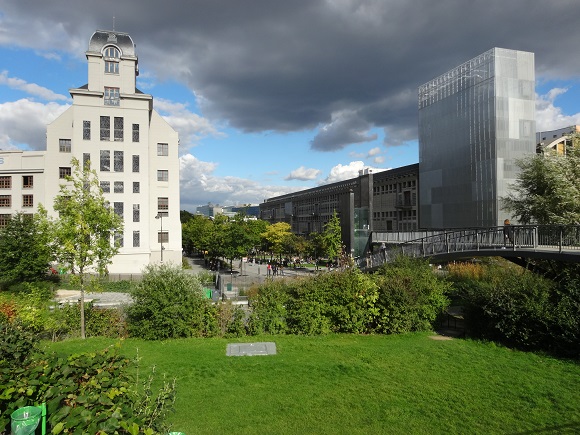
Led by Hoarau-Beauval’s enthusiasm, fluidity of explanation and evident expertise, we visit a portion of Paris Rive Gauche: green spaces, the varied architecture of recent apartment buildings, industrial building transformed to space for artists and craftsman, the university. We glimpse the brick smoke stack of the former compressed air plant of the 19th century that is now a part of the Paris Val de Seine School of Architecture. While Hoarau-Beauval admires some of the architecture and sections of urban planning in this zone more than others, she sees this as “generally successful experimentation.”
Some of the buildings have character, yet the businesses of the quarter rarely do. An exception is Fil’O’Fromage (12 rue Neuve Tolbiac; closed Monday), the enduring cheese-and-wine bar of philosopher cheese monger Chérif Boubrit (“I’m the Cherif,” he says).
Asked about other new quarters on the edges of the city, Hoarau-Beauval applauds plans for new construction projects such as those in the Batignolles Quarter of the 17th arrondissement and the Triangle Tower in the 15th arrondissement. (Those developments that continue to have many detractors, as presented here and here on France Revisited).
In decades to come will we be as dismayed by architecture and materials of the 1990s-2010s as we are by some of those of the 1960s and 1970s?
“We’ve learned a lot from our errors with respect to that period,” she says.
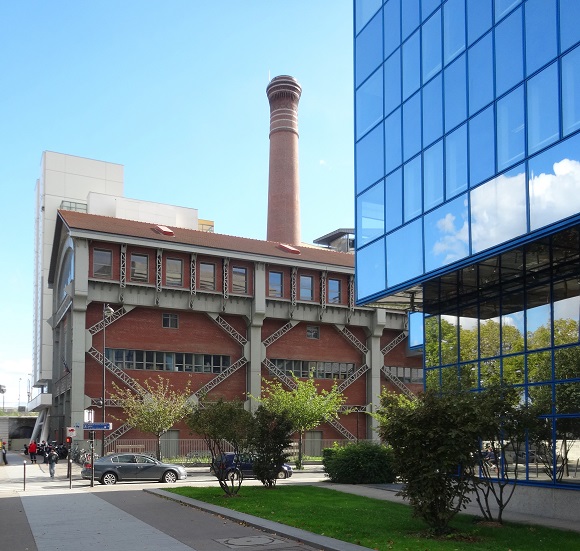
At times Hoarau-Beauval seems to appreciate buildings whose appeal I don’t see, yet her role and that of the ArchiTrip guides is not to sell us on the beauty or utility of these structures and the larger district but to help us understand the whos, what, whens and whys of their development.
As a historian she, she held a similar role of urban explainer when working from 2006 to 2014 at the Pavillon de l’Arsenal, an information and exhibition center devoted to urban planning and architecture in Paris and the surrounding region.
ArchiTrip’s other cofounder is Delphine Aboulker-Soriano, a licensed architect with a particular interest in Modernism. Aboulker-Soriano, who worked for two years in New York, is particularly interested in how architecture becomes recognized as heritage sites. In 2007 she cofounded Architecture de collection, a real estate agency dealing in remarkable architecture of the 20th and 21st centuries. Both cofounders continue to practice their specialization outside of their growing touring business.
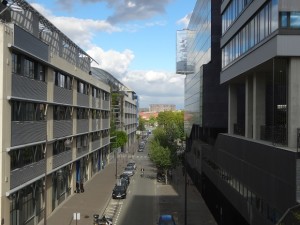
They are both bilingual, French and English, as are most of the 12 independent guides now working for ArchiTrip. Tours are also available in Japanese, Chinese and Italian. Hoarau-Beauval says whereas she first thought that these tours would be particularly attractive to foreign visitors, it was the French that took an immediate interest.
ArchiTrip regularly schedules 3-hour “discovery tours” on various edges of the city, as well as in the center. Among them are tours that examine: canal-side developments in Pantin, where suburban industry is giving way to an urban mix of culture, offices and apartments; the period between the wars around Trocadero in the 16th arrondissement; the Roaring Twenties on the Left Bank along boulevard Raspail and boulevard du Montparnasse; the 1930s in Boulogne-Billancourt; the constellation of 100-metre tower from the 1960s and 1970s built along the Seine in the 15th arrondissement; La Défense, Europe’s largest business zone, and others quarters.
These 3-hour tours include a well-situated café break, and, whether seated or walking, the tour guides encourage questions and constructive dialogue about the use of buildings and the life of neighborhoods and quarters.
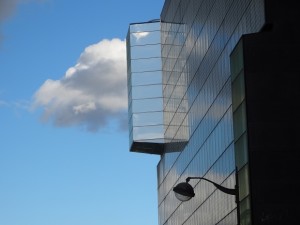
Discovery tours are designed for 10 to 15 participants, typically costing 36€ per person (18€ for the Pantin tour because partially subsidized by that suburb). Customized tours lasting 1½ to 3 hours are frequently organized for constituted groups of 6 to 8. There are also workshops for children ages 6 to 12, e.g. a workshop from Place de la Concorde to the Louvre by way of the Tuileries to examine the royal perspective to the west and observations about old and contemporary Paris.
An ArchiTrip tour may not turn you into a fan of the urban zones and architecture being examined, but it will open your eyes to how the powers that be in and around the capital city have conceived of its needs and its future over the past 100 years. Within and beyond the Paris that is so widely loved of an earlier time, the Paris of our own time merits exploration and understanding, whether we’d wish to stay/live in those parts of the city or not.
ArchiTrip, http://architrip.fr/en/
© 2015-2016, Gary Lee Kraut

